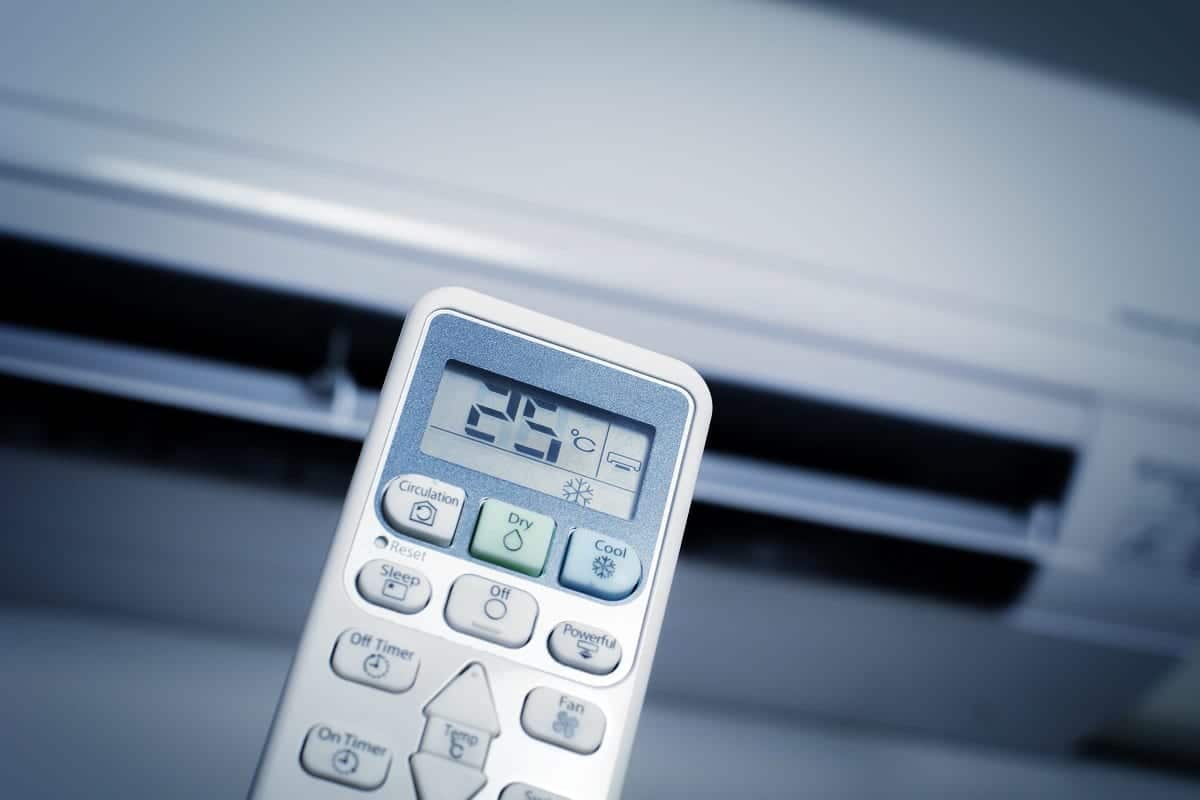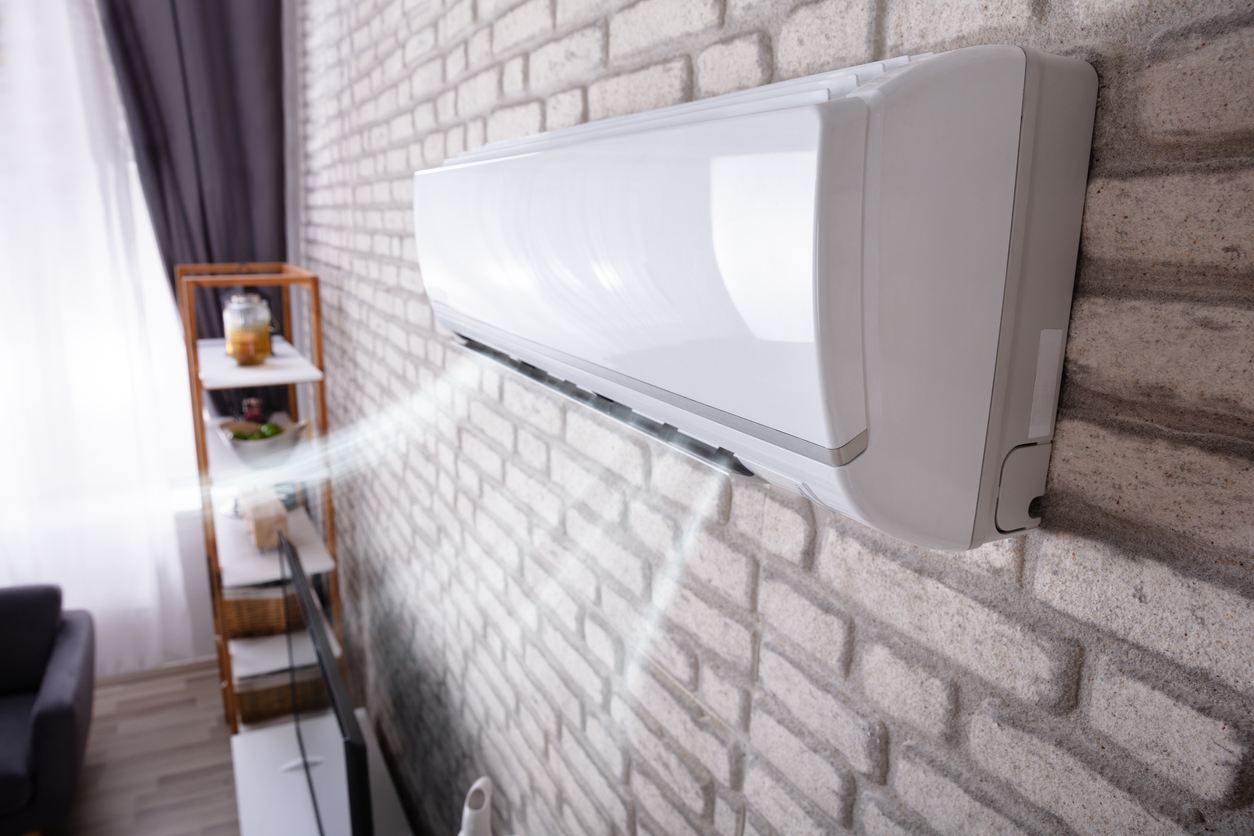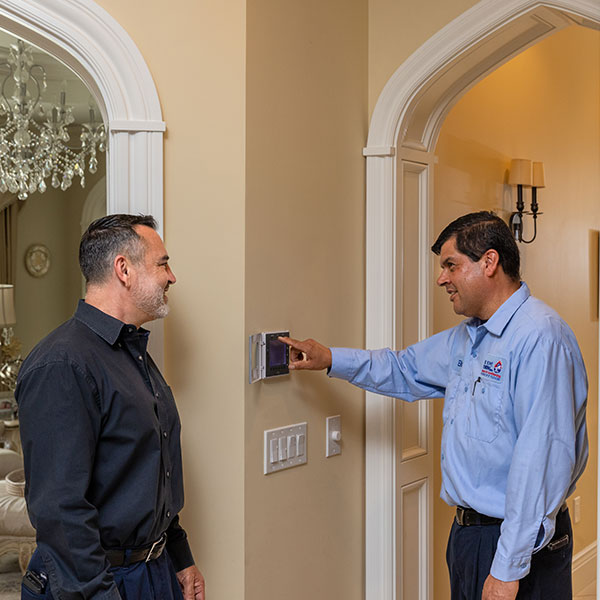When homeowners think about their residential HVAC systems, they think about the comfort of heating and cooling during extreme weather. However, heating & cooling systems not only do more than heat and cool a home, but they also provide air quality, air circulation and are large mechanical systems that require many components to function properly.
What Does HVAC Stand For?
HVAC is a term applied to the entire heating & air conditioning system. HVA stands for Heating, Ventilation, and Air Conditioning. Residential HVAC system components typically consist of an indoor furnace and an outdoor condensing unit that functions for the air conditioning system. However, ventilation, which is an important component and the system as a whole operates together to provide the very best in air quality and comfort in the winter and the summer months.
Residential Heating
Residential heating through a forced air system is achieved with a residential furnace. Most often, the furnace is located in the attic, closet, and sometimes in the garage of the home. Furnaces do also come in package units that also house the air conditioning component, but a furnace can function without air conditioning.
Components of Gas Furnaces
Thermostat
The thermostat tells the furnace what do. Most thermostats today are programmable, and many are even smart and can adjust the temperature of the home based on past settings, efficiency, and a homeowner’s preferences. Wi-Fi assisted thermostats can also be controlled remotely enabling homeowners to adjust the settings from anywhere with a Wi-Fi setting.
Based on the settings, thermostats tell the furnace what to do when the temperature reaches a certain threshold or dips below a certain temperature. It is best to place thermostats centrally so that the reading of the temperature does not have a wide deferential form a far away point in the home.
Burners
Just like a water heater, furnaces have burners, a gas valve, ignitor and a flame sensor that controls the heat source. The burners ion a typical furnace is a set of tubes where the gas flows. When the thermostat falls below a set temperature and heat is called for, the burners ignite and the gas valves open.
The flame sensor is one of the furnaces safety mechanisms that will shut the gas off if no flames are present. This is ensuring that the home does not fill up with dangerous gas (signs of gas leak blog)
Heat Exchanger
The heat exchanger contains metal tubing that is heated by the burners. Inside of the heat exchanger, gas is combusted enabling the heat exchanger to get hot enough to maintain radiant heat. The radiant heat is what goes into the air passing through that then goes into the home’s ductwork and through the registers (or interior vents) and warms the environment of the home.
Blower and Fan
As air is sucked into the return air register, it is blown into the heat exchanger where the air is warmed and then forced through the home’s ductwork. Different furnaces have different types of blowers including a variable speed that adjusts on its own for higher efficiency and multi-speed blowers that homers control via the thermostat.
Return Register and Ductwork
As the home fills with warm air, the cooler air, which is denser, is sucked through a larger intake register and goes through the heating process all over again.
Ducting is present in all forced air heating and air conditioning systems. Although there are ductless HVAC systems, most homes have utilized traditional ducted systems.
Ductwork can run through attics and underneath homes in the crawl space. One of the most common causes of wasted energy is improperly sealed ducting or cracks, dips, or broken seals in ductwork. Ducting forms the furnace and is directed throughout the home where the air enters through indoor registers (typically located on the walls at the floor or near the ceiling).
Homeowners should ensure that ducting is inspected during annual heating & cooling preventative maintenance services.
Venting
All furnaces include draft hoods and proper ventilation configurations. Because all gas appliances have carbon monoxide burn off, it is integral to safe operation for the furnace to vent the spent combustion gases that are created from the heating elements outside of the home. Draft hood fans help to direct the spent fuel our site of the home.
Filter
Although seemingly the least important aspect of a functioning furnace, the filter is actually one of the more important components to both central heating and central air conditioning.
A clean high-efficiency filter will allow the furnace to work at the optimal level. When a filter is dirty, it takes more force and energy for air to travel through and the furnace has to work harder. This also passes dust, bacteria, and other particles into the homes circulating air.
Homeowners should change or clean their filter every two to four months.
Central Air Conditioning
Central Air conditioning for residential HVAC systems have several components as well, but also rely on a furnace to function creating two key air conditioning components: an indoor unit and an outdoor unit.
Indoor Unit
The indoor unit of the air conditioner actually utilizes the furnace blower motor and an additional indoor evaporator coil is installed.
Evaporator Coil
The evaporator coil works with the refrigerant, what most people associate as the brand Freon that absorbs warm air. Once the warm air is evaporated, condition or cool air is left and enters the home through ductwork.
Outdoor Unit
The outdoor component typically referred to as a condensing unit consists of a compressor, coil, and outdoor blower motor.
Compressor
The compressor is housed in the outdoor condenser and moves refrigerant through the system. The refrigerant is compressed to a high-pressure gas and then moved through the outdoor coil. During this process, the outdoor fan passes the air across the refrigerated coil.
The conditioned, or cooled air, is then moved back into the home and dispersed throughout the homes ducting and indoor registers.
Warm air from the home is then expelled through the condenser unit and the large fan blows it to the outside.
It is important to note that the air conditioning does not actually cool the air. An air conditioner simply removes heat and humidity and then passes air that has passes over compressed refrigerant and circulates through the home. Warm air is removed and the process repeats, giving off cooled air.
In fact, air conditioning we know of today was invented as a system to remove moisture from the air. The resulting by-product was cooler air. Inventor Willis Carrier invented his system in 1902 to solve the problem of New York summer humidity in a local print shop. Carrier is still one of the major air conditioning brands.
Preventative Maintenance
All residential HVAC systems should be regularly maintained by a licensed professional. HVAC professionals will perform needed safety checks, clean all of the mechanical components, and fine tune the system to ensure proper functionality when homeowners need it most. It is recommended to perform these annual tune-ups in the season prior to use. Spring is the ideal time to schedule an air conditioner maintenance and, in the fall, homeowners should schedule a heating tune-up. Additionally, homeowners should change the air filters at least two to four times per year ensuring that the airflow is never restricted.
For the best residential HVAC services and preventative maintenance packages, contact the experts at Bill Howe Heating & Air.
Call 1-800-BILL HOWE (245-5469) today.




